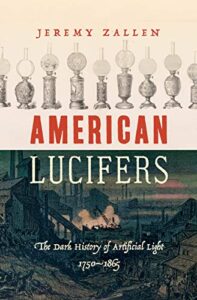 In giving the world the magnificent book The World Lit Only By Fire, William Manchester provided not only one of the finest histories yet written about the transition of Europe from its Medieval period to that of the Renaissance, he also created a superb succinct description of the manner in which everyday life was lived by both rich and poor prior to the invention of artificial light. It’s not something to which we now give much consideration – until a blackout occurs – but the advent of artificial illumination in the world not only radically altered the conduct of daily life in all societies upon acquisition of it, it also came with a tremendous cost to millions of people as well as to the environment; costs that are rarely accounted and the effects of which continue to our present day.
In giving the world the magnificent book The World Lit Only By Fire, William Manchester provided not only one of the finest histories yet written about the transition of Europe from its Medieval period to that of the Renaissance, he also created a superb succinct description of the manner in which everyday life was lived by both rich and poor prior to the invention of artificial light. It’s not something to which we now give much consideration – until a blackout occurs – but the advent of artificial illumination in the world not only radically altered the conduct of daily life in all societies upon acquisition of it, it also came with a tremendous cost to millions of people as well as to the environment; costs that are rarely accounted and the effects of which continue to our present day.
Prof. Jeremy Zallen‘s recently published book American Lucifers; The Dark History of Artificial Light, 1750–1865 presents the transition of “a world lit only by fire” into one ablaze in light and depicts how it was only made possible by a sizable portion of the population undergoing great hardships in the shadows. “[B]y taking the lives of whalers and enslaved turpentine makers, match-manufacturing children and coal miners, night-working seamstresses and the streetlamp-lit poor,” and the effects wrought upon the environment into consideration, a much more nuanced and complete history of the journey from darkness into light is achieved, one that brings the full costs of the transition into the light of day.
Those interested in the history of science – particularly the history of technology and its development in the eighteenth and nineteenth centuries – should take particular note of this book. As it has already been awarded the 2020 Albert J. Beveridge Award by the American Historical Association, was a finalist for the 2020 George Perkins Marsh Prize of the American Society for Environmental History, and was selected as a 2020 Choice Outstanding Academic Title, its merit has clearly been well established.
If you enjoyed reading this, please consider signing up for The Well-read Naturalist's newsletter. You'll receive a helpful list of recently published reviews, short essays, and notes about books in your e-mail inbox once each fortnight.
